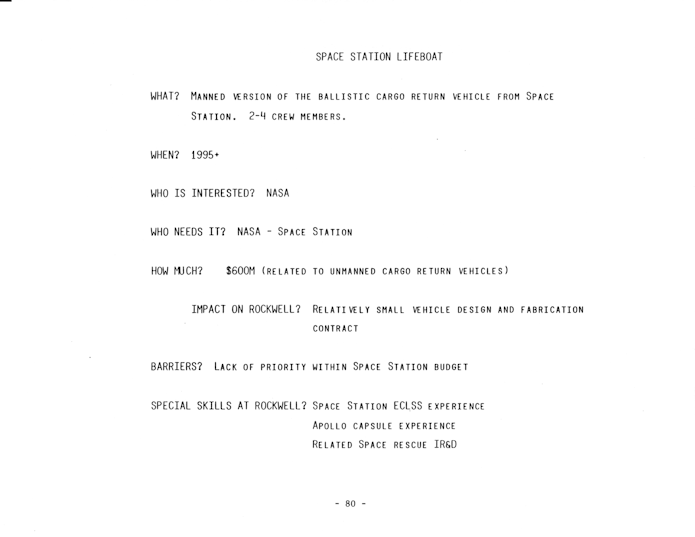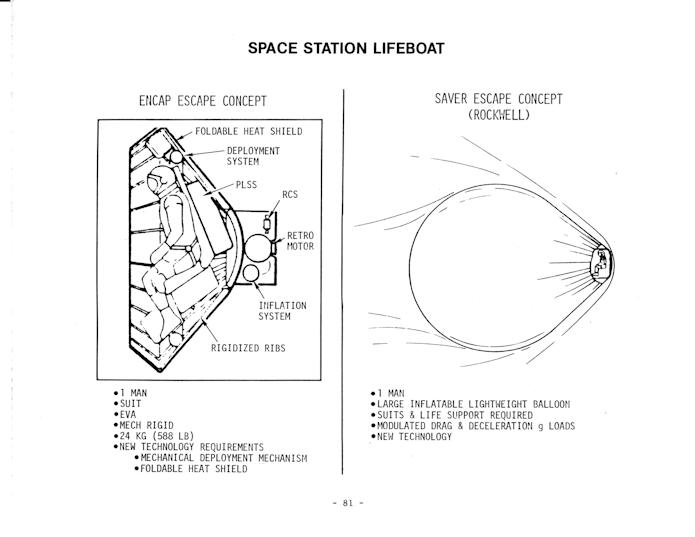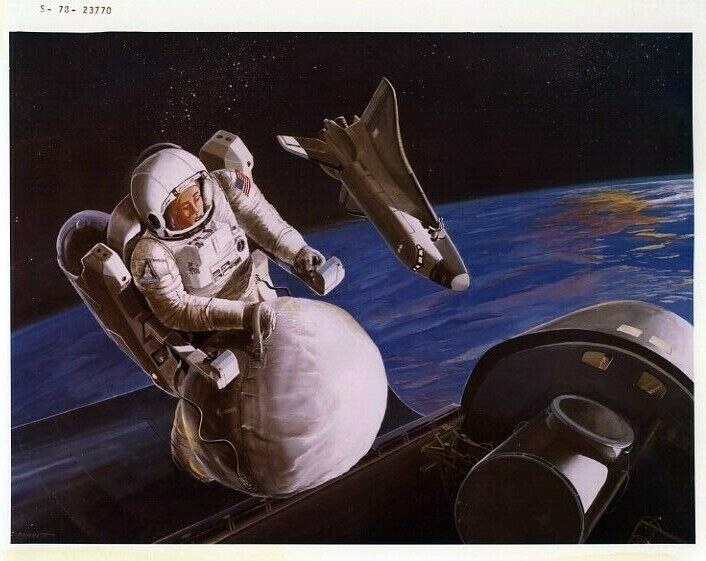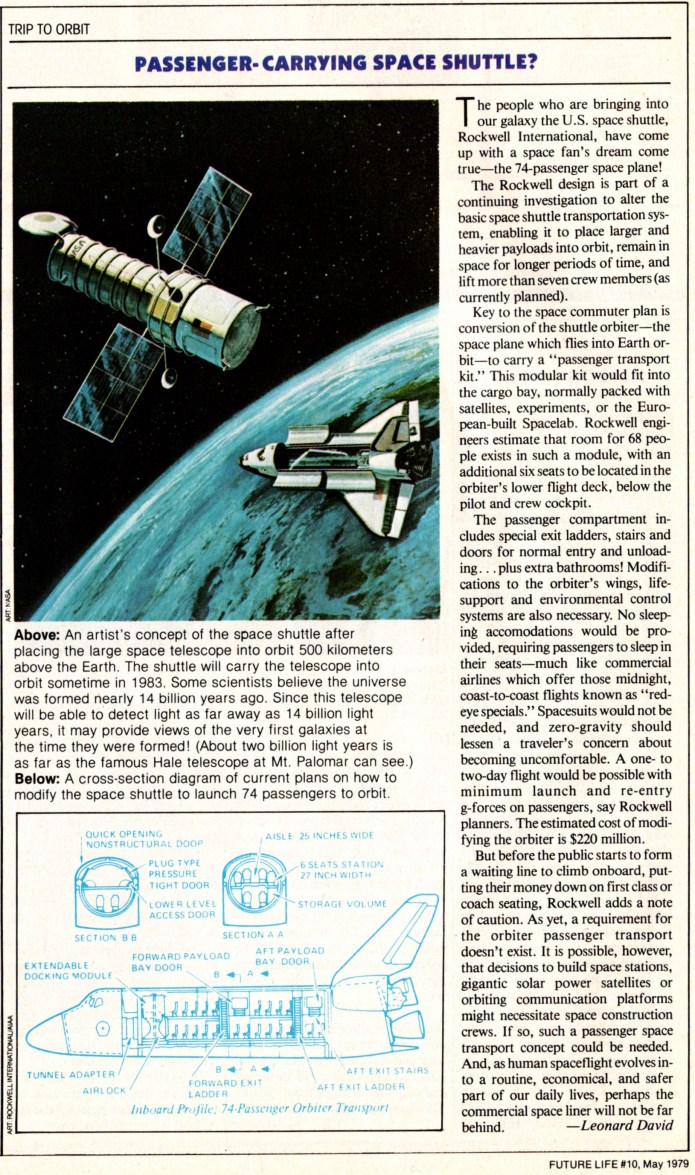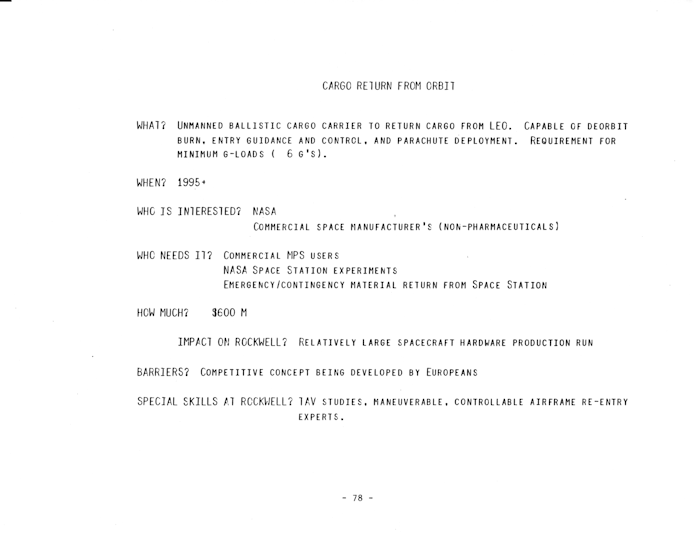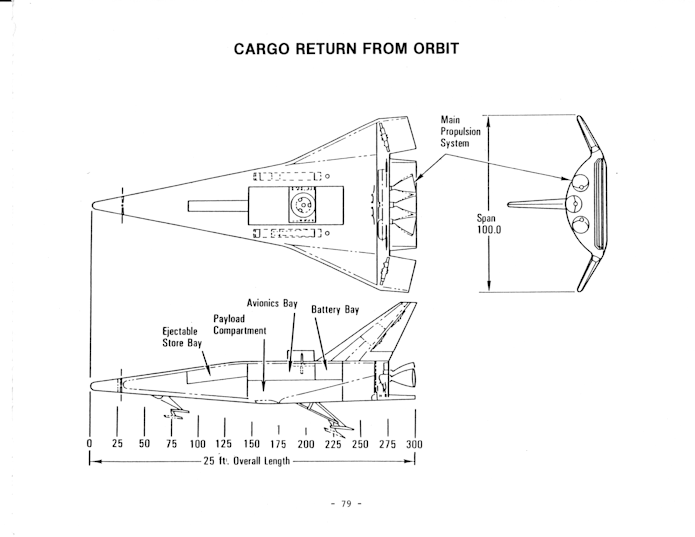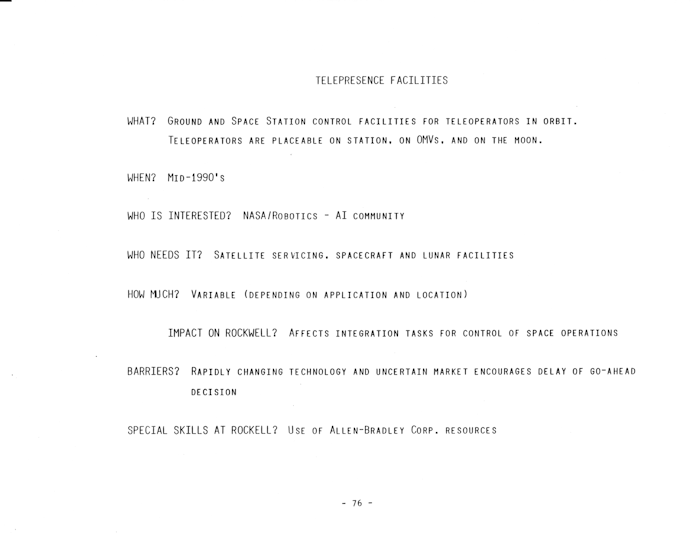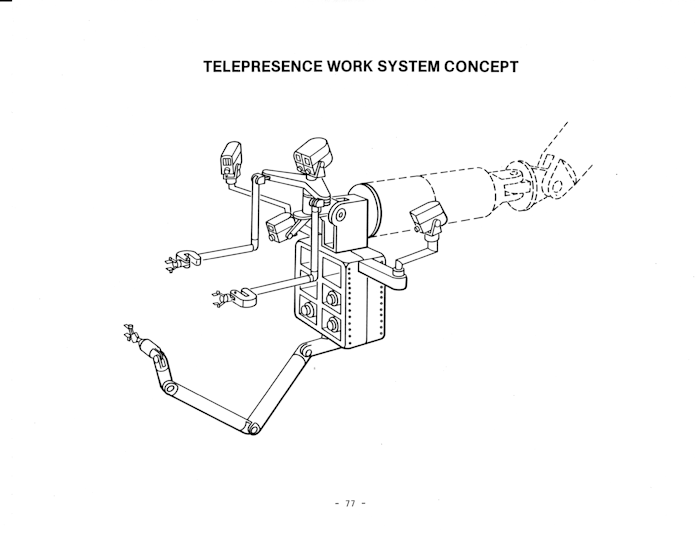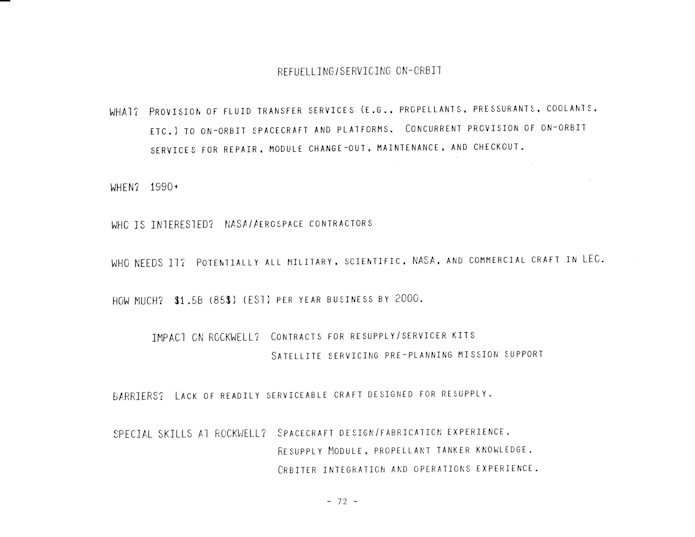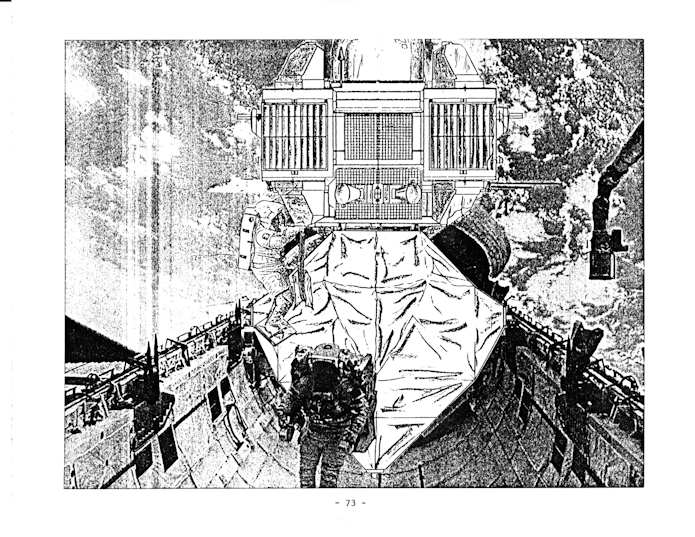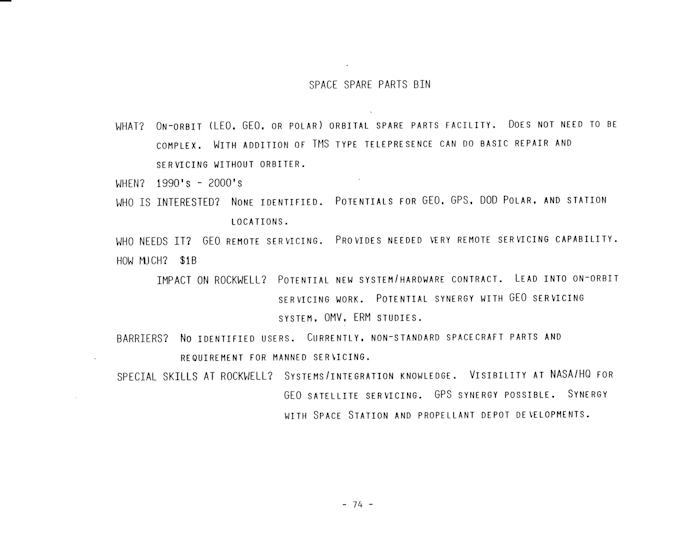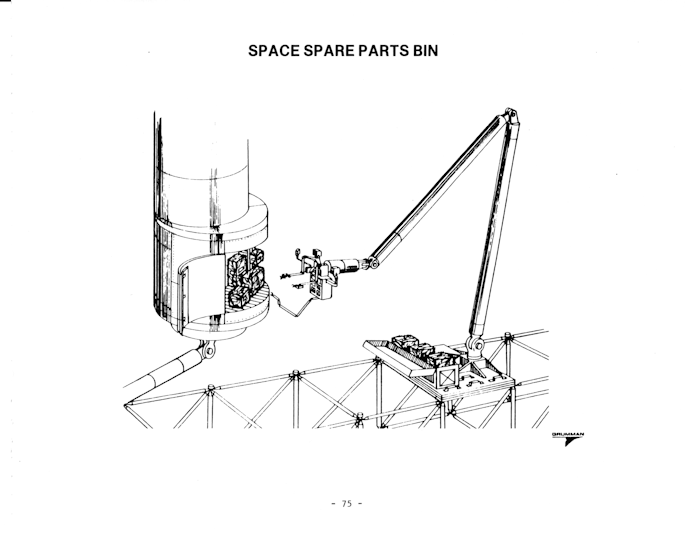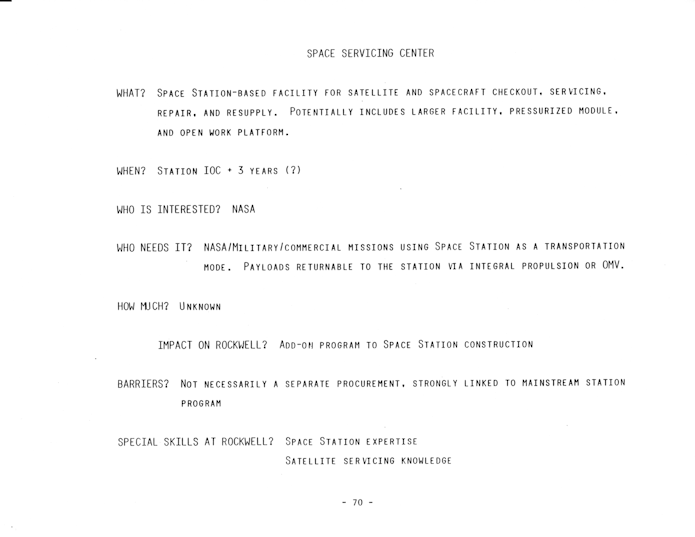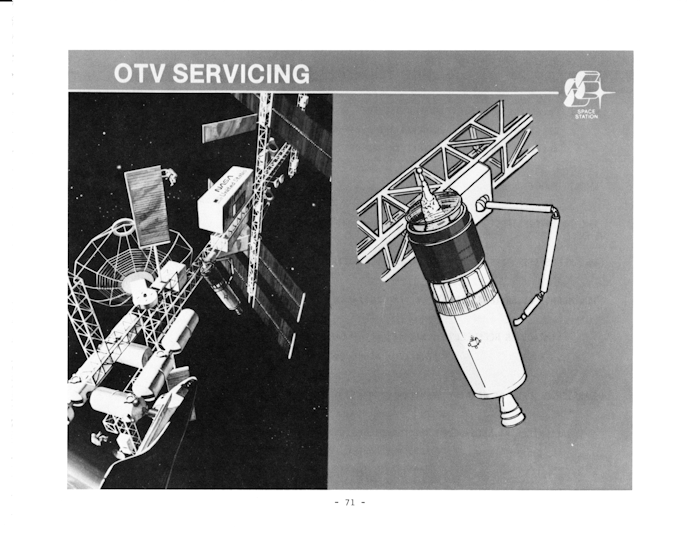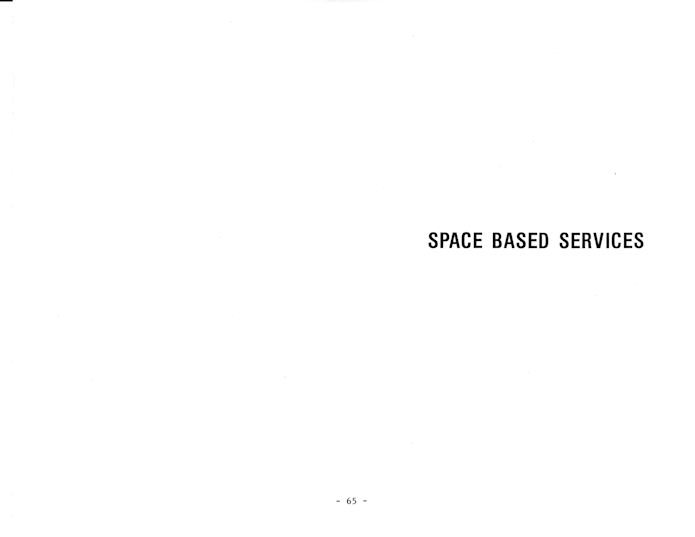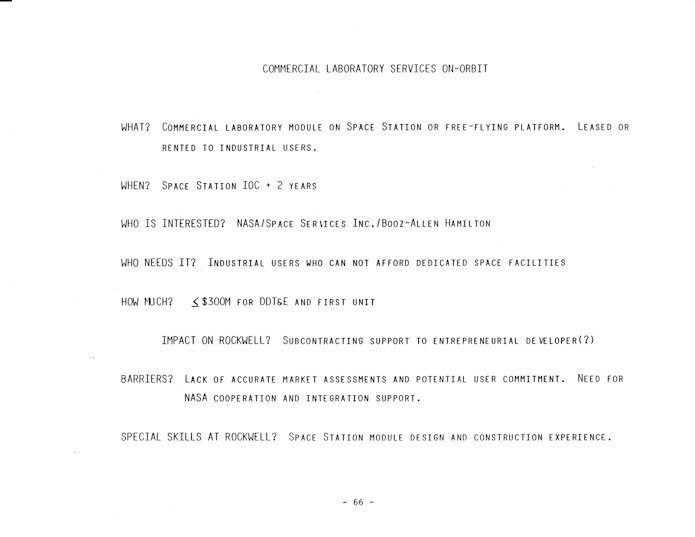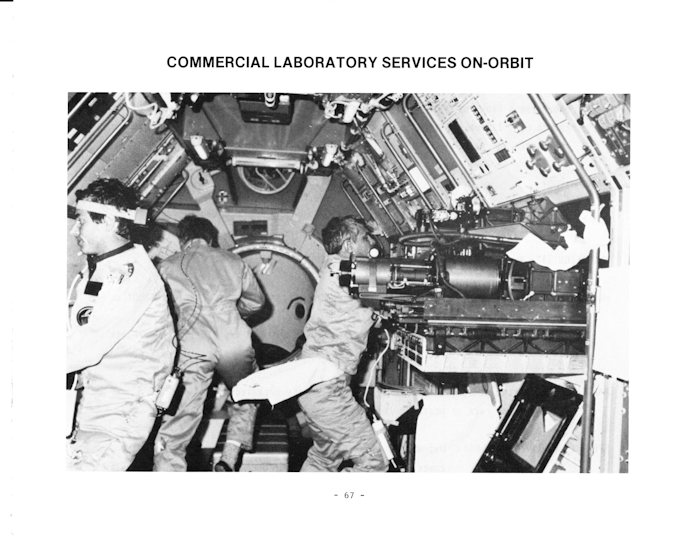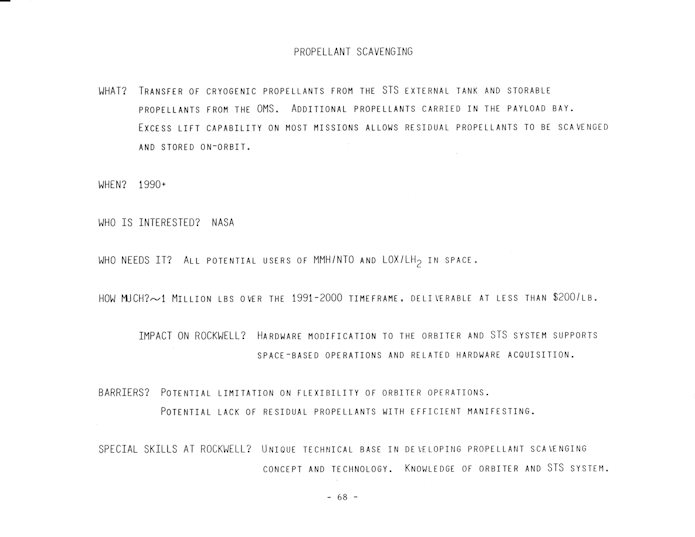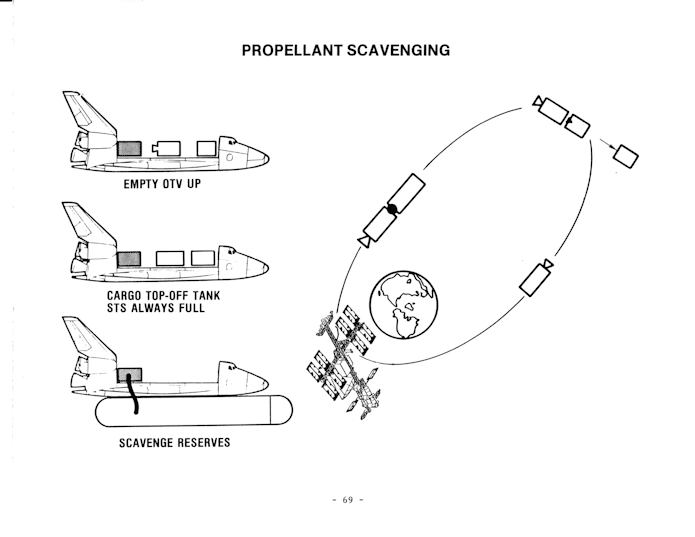Rockwell suggested in 1985 that manned versions of their ballistic cargo return systems could be used to return astronauts from the space station in the event of an on-orbit disaster. Two concepts are illustrated (“ENCAP” and “SAVER”), one similar to the Douglas “Paracone” from the 1960’s, and a version using a balloon to provide drag. So presumably the cargo return system, illustrated with a lifting body diagram, would actually closely resemble one of these systems.
A 1978 NASA artists impression (taken from ebay) depicting a “rescue ball” being used. This short-lived product was basically a space suit in spherical form, one that a Shuttle astronaut in shirt sleeves could enter relatively quickly in the event of an on-orbit disaster. Another Shuttle could send astronauts to collect the encapsulated and helpless astronauts and transfer them to a non-doomed shuttle. It was *kind* of a good idea, but once it was realized that the Shuttle takes *weeks* to prep for launch, the idea of using a Shuttle to rescue another Shuttle fell by the wayside. Instead of the crew of a stricken Shuttle relying on another Shuttle for rescue, official policy became la-la-la-I-can’t-hear-you and orbital rescue equipment became superfluous.
Here’s an article from “Future Life” magazine, May 1979, describing a Rockwell concept for a passenger module for the Shuttle. This could carry 74 passengers, a loadout that seems perhaps excessive until you realize that it was meant to transport the crews who would build the miles-long solar power satellites. If this concept is of interest, be sure to check out US Bomber Projects #06, the Solar Power Satellite Launch Special. There, another concept for a Shuttle “bus” was described and illustrated.
In 1985, Rockwell considered the possibility of making a business of returning commercial cargoes from orbit. This is a tricky proposition: almost *nothing* in space is worth more returned back to the ground. Humans, of course, and highly hypothetical products made in zero-g… drugs, crystals, electronics. but none of those actually panned out: zero-g and/or high vacuum might produce some small benefit for various chemical processes, but terrestrial manufacture is so much easier and cheaper that nothing has so far come from on-orbit production
The description mentions a “ballistic cargo carrier,” but the piece is illustrated with a lifting body. This appears to be the same vehicle mentioned previously as a “hypervelocity research vehicle.” I don’t know if this means Rockwell gave thought to using the HRV as a cargo return system (if so, it would be an inefficient way to go) or if the HRV diagram was simply conveniently at hand. A ballistic capsule would probably be by far the best way to go for returning payloads that are relatively insensitive to g-forces. Cheaper, smaller, lighter and, importantly, cheaper than a lifting body.
Next up: Space Station Lifeboats.
In 1985, Rockwell wondered about whether there was a business case for space-based telepresence. At the time, the technology was relatively new, clunky, primitive; today it would be vastly superior and would only hardly ever attain self awareness and decide to overthrow its human masters. But nearly 40 years ago, the systems would doubtless have been slow, unwieldy and difficult to use effectively and reliably.
Up next: a spaceplane for cargo return! Stay tuned! Tell your friends! Invest now! The APR Monthly Historical Documents Program helps keep this sort of thing coming.
In 1985, Rockwell suggested that there might be profit in turning the Shuttle into a tanker for refueling/and servicing other spacecraft. At the same time they had the idea of a space-based “spare parts bin,” which was just what it sounds like. The former makes a great deal of sense, but the latter… not so much. Today, however, a similar idea would probably include buckets of raw metal powder and some form of zero-g 3D printer to fabricate the needed parts. Otherwise, the number of parts that would be needed to service even the smallest fraction of satellites in orbit would be vast.
Picking up where we left off…
In 1985, Rockwell considered the possibilities of space-based commercial services such as modules added to the Space Station or free-flying on their own and propellant scavenging from the External Tank and OMS pods. in the decades since, neither of these has come to pass. Commercial modules for the ISS have been proposed, but none flown, and certainly no free-flying man-tended commercial space facilities have been launched. Similarly, the idea of scavenging residual propellant is a good one… *IF* you can do it cost effectively. Every drop of rocket fuel returned to Earth is a waste of money and potential, along with being a potential environmental hazard when it’s inevitably just dumped into the atmosphere after re-entry or touchdown.
